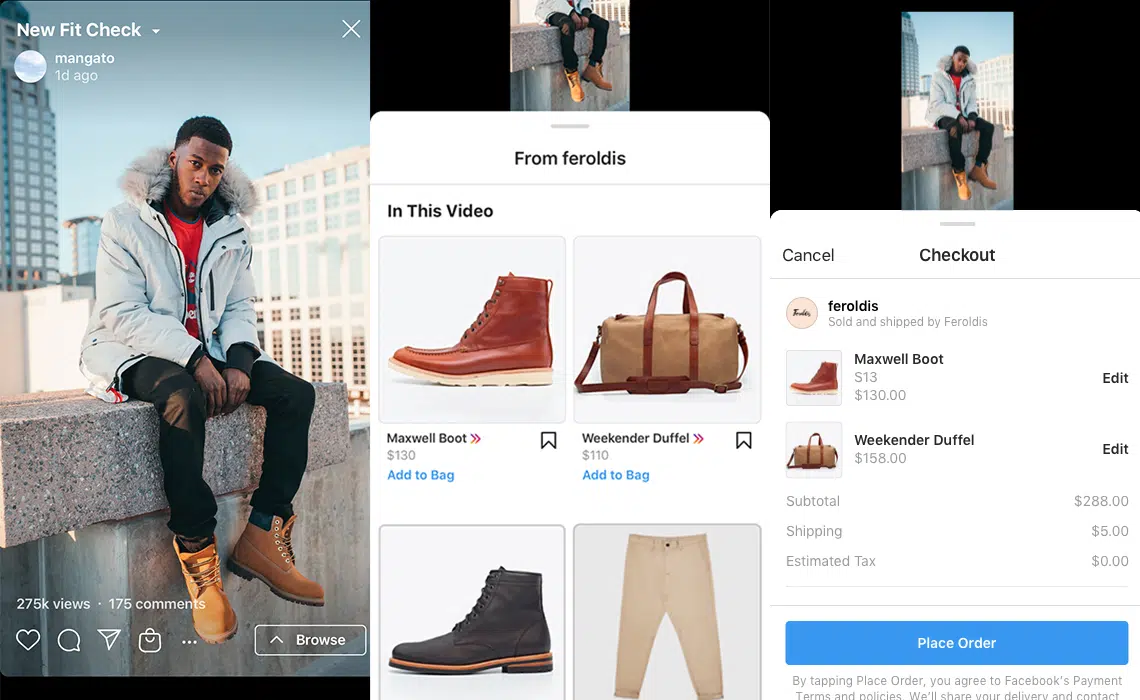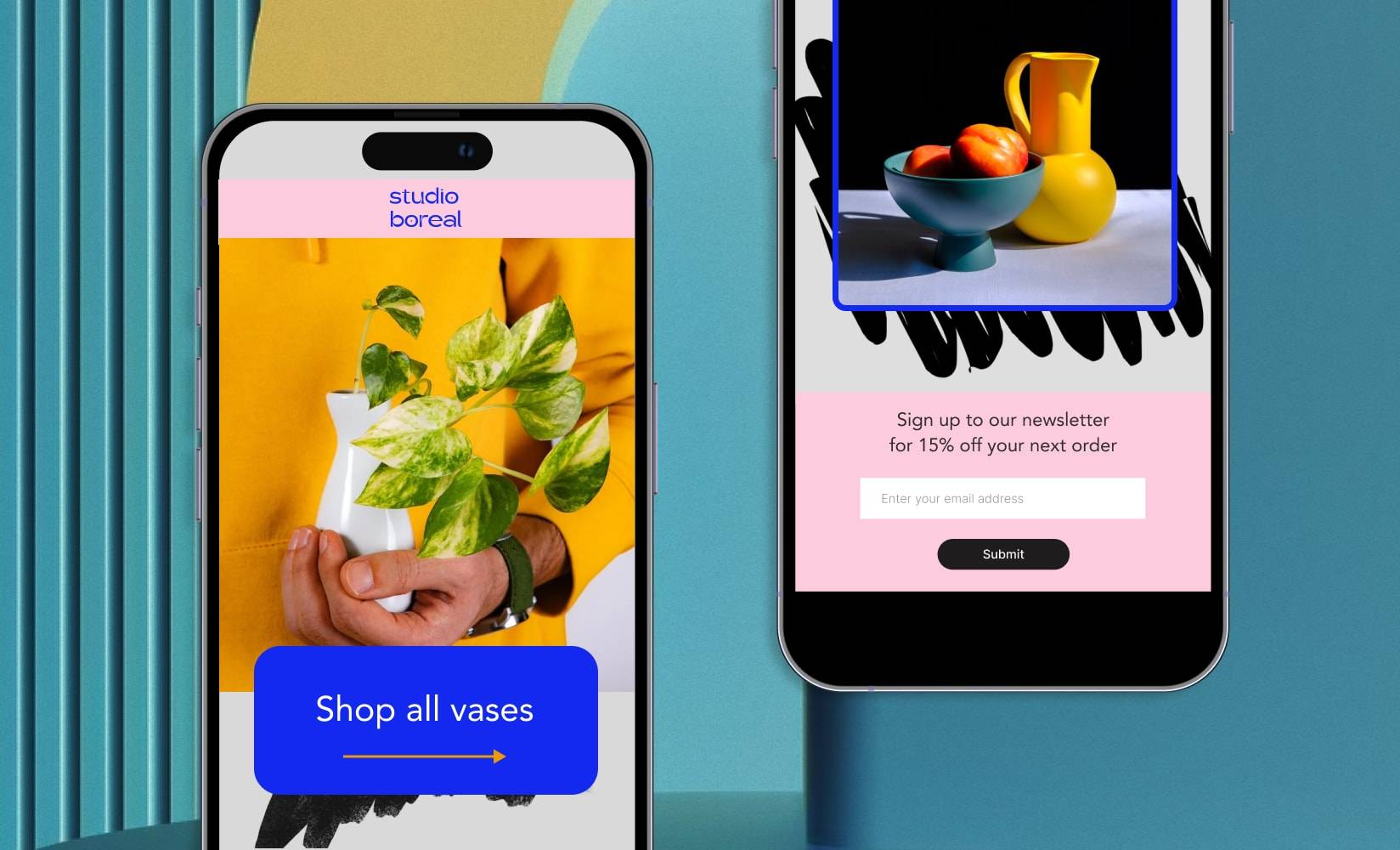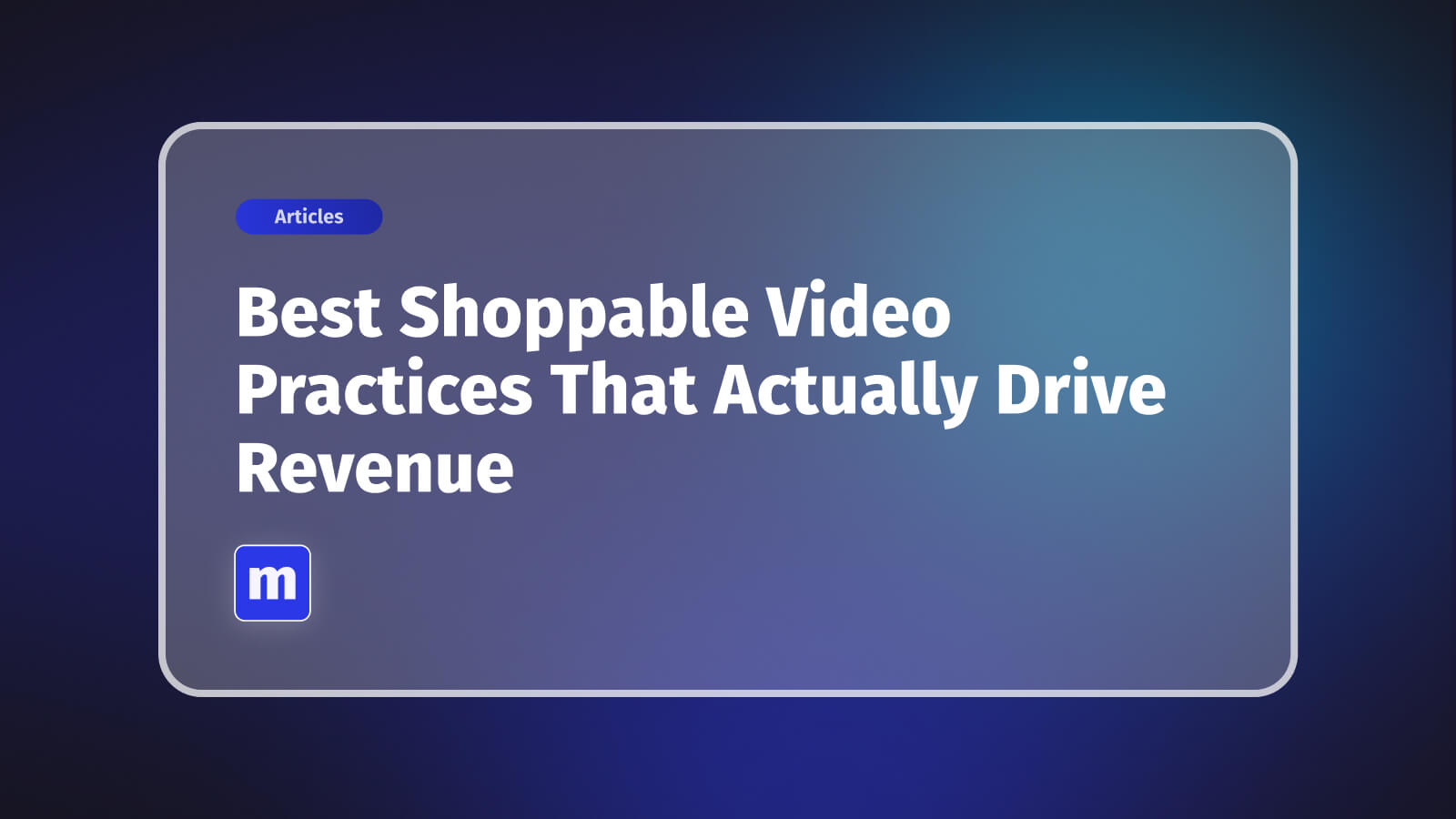.jpg)
Table of Content:
- Technological Advancements
- Payment and Checkout Innovations
- Sustainable and Ethical Shopping
- Personalization and Customer Experience
- Global Expansion and Localization
- Mobile Commerce Evolution
- Subscription-based Business Models
- Social Commerce and Influencer Collaborations
- Omnichannel Retail Strategies
- Data-driven Decision Making and Analytics
In the dynamic world of online retail, e-commerce has proven to be a force that constantly reshapes how we buy and sell. As we stand at the threshold of 2024, the e-commerce landscape is buzzing with innovations and shifts that promise to redefine the shopping experience. Whether you're a seasoned e-commerce veteran or a newcomer to the digital marketplace, understanding the latest trends is crucial. Not only do they offer a glimpse into the future of online shopping, but they also provide actionable insights for businesses aiming to stay ahead of the curve.
Moast has worked with hundreds of e-commerce brands, having successfully implemented our customer-led growth strategy. In doing so, we’ve had the luxury of discussing with e-commerce marketing managers and directors and getting their insights on what they believe will be industry trends to look out for in 2024. In this comprehensive guide, we'll delve into over 80 trends in e-commerce that are set to make waves next year. From technological advancements to shifts in consumer behavior, get ready to discover the future of online retail.
1. Technological Advancements
The world of e-commerce is intrinsically linked to technological progress. As technology evolves, so does the online shopping experience. In 2024, a few technological trends are poised to revolutionize the way consumers interact with online stores and how businesses deliver value.
1.1. Augmented Reality (AR) Shopping
The virtual and physical worlds are merging with the rise of Augmented Reality in e-commerce. AR tools are empowering consumers to visualize products in their real environment before making a purchase. For instance, furniture stores like IKEA allow users to place virtual furniture in their homes using AR, ensuring the product fits and looks right before they buy.

1.2. Artificial Intelligence (AI) Customer Service
Gone are the days of waiting in long queues for customer support. AI-driven solutions, such as chatbots and virtual assistants, are streamlining customer interactions, offering instant responses to queries and concerns. Brands like Sephora use AI to provide personalized product recommendations, enhancing the shopping experience by understanding individual customer preferences.
Zapier put together a list of the best AI powered chat-bots out there.
1.4 Personalized Product Recommendations
One of the greatest strengths of AI is its ability to analyze vast amounts of data and discern patterns. E-commerce platforms are leveraging this to offer personalized product recommendations based on a user's browsing history, past purchases, and even current viewing patterns. Brands like Netflix, though not strictly e-commerce, exemplify the power of AI-driven recommendations, tailoring content suggestions to each viewer's unique taste.
1.5 Virtual Shopping Assistants
Virtual shopping assistants, embedded within e-commerce platforms, guide users through their shopping journey. Whether it's helping select the right product size, color, or even suggesting complementary items, these AI-driven assistants enhance the shopping experience. Zara, for instance, has experimented with virtual assistants to aid customers in assembling stylish outfits.
Check out this breakdown on virtual shopping assistants.
1.6 Voice-activated Shopping
Voice technology is making shopping as simple as having a conversation. With the growing integration of voice assistants like Alexa and Google Home into e-commerce platforms, consumers can now search for products, check reviews, and even place orders using just their voice. For example, brands like Domino's have enabled voice ordering, allowing customers to order a pizza without lifting a finger.
1.7 5G and Enhanced Mobile Shopping
The advent of 5G is turbocharging mobile e-commerce. With lightning-fast load times and smoother browsing experiences, consumers can now shop on-the-go without any hitches. Major e-commerce platforms like Amazon are optimizing their mobile apps to harness the full potential of 5G, ensuring that users have a seamless shopping experience, even with heavy data tasks like streaming product videos.
In 2024, technology continues to be the driving force behind e-commerce innovations. Augmented Reality (AR) is bridging the gap between virtual and real, allowing consumers to try products in their space before buying. Artificial Intelligence (AI) is elevating customer service, offering timely assistance and personalized recommendations. Voice-activated shopping is simplifying the buying process, turning shopping into a conversation. And with the introduction of 5G, mobile e-commerce is faster and more efficient than ever. It's an exciting time for online retail, with technology leading the way.
2. Payment and Checkout Innovations
As the world of e-commerce evolves, so does the way we transact. Traditional payment methods are making way for more innovative, efficient, and flexible options, catering to the diverse preferences and needs of the modern shopper.
2.1 Cryptocurrency Payments:
Digital currencies like Bitcoin and Ethereum are no longer just investment assets; they're becoming a preferred mode of transaction for many online shoppers. As the decentralized finance movement gains traction, e-commerce platforms are integrating cryptocurrency payment gateways. While this offers a new level of transparency and global accessibility, businesses must also navigate the volatility associated with crypto prices and ensure robust security measures.
Here’s a complete guide on how e-commerce stores cna integrate crypto payment gateways.
2.2 One-click Checkouts
The faster the checkout, the happier the customer. Reducing the number of steps and clicks in the checkout process can significantly decrease cart abandonment rates. Many e-commerce platforms are now offering one-click checkout options, where returning customers can make purchases using their saved payment details. This not only speeds up transactions but also enhances the overall user experience.
Shopify recently announced one-click checkouts. They put together a breakdown on how to implement them.

2.3 Buy Now, Pay Later Options
Financial flexibility is at the forefront of modern e-commerce. Platforms like Klarna and Afterpay allow customers to purchase products immediately but spread the payment over several installments. This approach not only boosts sales by making products more accessible to a broader audience but also instills trust and loyalty, as customers appreciate the flexibility in managing their finances.
2.4 Biometric Verification
Security remains paramount in online transactions, and biometric verification is stepping up to the challenge. E-commerce platforms and payment gateways are beginning to integrate fingerprint, facial recognition, and even voice recognition to authenticate transactions. This not only adds an extra layer of security but also streamlines the checkout process, as users can verify payments with just a glance or touch. Apple Pay, for instance, utilizes Face ID and Touch ID for transaction authentication.
AuthID is a leader in supporting e-commerce stores to integrate this technology.
3. Sustainable and Ethical Shopping
In an era where consumers are becoming increasingly aware of the environmental and ethical implications of their purchases, e-commerce platforms are rising to meet these demands. Integrating sustainable practices and championing ethical sourcing are not just good for the planet and its inhabitants, but they're also becoming essential for businesses aiming to build trust and loyalty among their customer base.
3.1 Eco-friendly Packaging
The detrimental impact of plastic and non-biodegradable packaging is undeniable. As a response, many e-commerce businesses are transitioning to sustainable packaging solutions. From recycled materials to compostable wrappers, the emphasis is on reducing waste and environmental harm. Brands like Lush Cosmetics have been at the forefront, using minimal, recyclable, or reusable packaging, setting a precedent and attracting eco-conscious consumers.

3.2 Ethical Sourcing
Today's consumers want more than just a product; they want assurance that it has been sourced responsibly. The spotlight is on transparent supply chains that prioritize fair labor practices, cruelty-free testing, and sustainable sourcing of materials. Companies like Patagonia are examples in this realm. They not only ensure that their products are made ethically but also provide detailed insights into their supply chains, assuring customers of their commitment to ethical practices.
3.3 Carbon Neutral Shipping
As concerns over carbon emissions and global warming intensify, e-commerce businesses are seeking ways to offset their carbon footprint, particularly in their shipping and delivery operations. By investing in carbon offset projects or partnering with eco-friendly delivery services, companies can ensure that the environmental impact of transporting goods is neutralized. For instance, Etsy launched its "Etsy Offset" initiative, automatically offsetting the carbon emissions generated by shipping, demonstrating to consumers their commitment to environmental responsibility.
This section underscores the growing emphasis on sustainability and ethics in the e-commerce world. It's a testament to the evolving consumer mindset and the subsequent shifts in business practices.
.svg)
4. Personalization and Customer Experience
In the age of digital commerce, consumers are no longer satisfied with one-size-fits-all shopping experiences. They crave personalization, desiring interactions and offerings tailored to their unique preferences and behaviors. E-commerce platforms that prioritize personalization and invest in enhancing the overall customer experience are positioned to thrive, fostering deeper connections and loyalty among their clientele.
4.1 Dynamic Content Personalization
By leveraging AI and machine learning, businesses can deliver content that resonates with individual users. Whether it's showcasing products based on browsing history, suggesting similar items, or even tailoring homepage displays, dynamic content personalization ensures each visitor feels seen and valued.
Brands like Stitch Fix, an online personal styling service, exemplify dynamic content personalization by curating fashion selections tailored to individual customer profiles, preferences, and purchase history.
4.2 Interactive and Shoppable Videos
The line between content and commerce is blurring. Brands are integrating shopping features within video content, turning passive viewing into active shopping experiences. These shoppable videos allow users to click on products within the video, view details, and even add them to their cart, all without leaving the video interface. Brands like ASOS have ventured into this realm, showcasing their products in action and allowing instant purchases.
Influencer Marketing Hub put together a piece on 15 shoppable video platforms to add to your store.

4.3 Customer Feedback Loop
Ensuring a stellar customer experience goes beyond the initial sale. Forward-thinking e-commerce platforms are creating continuous feedback loops, where they actively solicit, analyze, and act on customer feedback. This iterative process ensures that businesses are always evolving and addressing consumer needs. Zappos, known for its exceptional customer service, often acts on customer feedback to refine its offerings and service strategies.
4.4 Virtual Try-On Experiences:
Augmented Reality (AR) isn't just for gaming; it's transforming e-commerce by offering virtual try-on experiences. Whether it's trying on a pair of sunglasses, a new lipstick shade, or even a piece of furniture in a room, AR allows customers to visualize products in their real context before making a purchase. Warby Parker, a leading eyewear brand, provides a virtual try-on feature, allowing customers to see how different frames look on their face using their phone's camera.
4.5 Interactive Testimonials
Traditional product reviews are getting a modern, interactive twist. Instead of static comments, e-commerce platforms are adopting interactive testimonials, allowing potential buyers to engage in real-time conversations with existing customers. This approach not only offers a more authentic insight into the product but also fosters trust through genuine, unfiltered interactions. Transformer Table, for instance, utilizes Moast for their interactive testimonial strategy, elevating the credibility of their customer feedback and offering potential buyers a deeper understanding of the product experience from real users.
In today's e-commerce landscape, personalization and enriched customer experience are pivotal for success. Brands are leveraging dynamic content to offer tailored shopping experiences, moving beyond static displays to interactive and engaging formats like shoppable videos and virtual try-ons. Interactive testimonials are emerging as a trust-building tool, shifting from one-sided product reviews to engaging conversations between potential and existing customers. These strategies highlight the importance of genuine, tailored interactions in fostering customer loyalty and trust in the digital shopping realm.
5. Global Expansion and Localization
In our increasingly interconnected world, e-commerce isn't bound by geographical limitations. However, as businesses expand globally, it's crucial to understand and cater to the unique cultural, linguistic, and consumer nuances of different regions. Successful global expansion in e-commerce hinges on a brand's ability to localize its offerings while maintaining its core identity.
5.1 Cross-border E-commerce
The digital marketplace knows no borders. Brands are increasingly venturing beyond their home territories, tapping into international markets and broadening their customer base. But it's not just about shipping products overseas; it's about understanding local customs, payment preferences, and even holiday shopping patterns. Companies like Alibaba have mastered the art of cross-border e-commerce, connecting sellers and buyers from diverse regions and backgrounds.
5.2 Localized Marketing Strategies
A one-size-fits-all marketing campaign won't resonate with everyone. Tailoring marketing content to align with local cultures, festivities, and sentiments is paramount. Using region-specific imagery, language, and even humor can make campaigns more relatable and effective. For instance, Zalando, the European e-commerce fashion platform, crafts region-specific marketing campaigns, tapping into local fashion trends and cultural nuances, ensuring their messaging is both relatable and engaging for diverse European audiences.
5.3 Cultural Sensitivity and Product Curation
As businesses expand globally, it's essential to curate product lines that resonate with local tastes and preferences. This might mean introducing new products, tweaking existing ones, or even refraining from selling certain items due to cultural sensibilities. Brands like Uniqlo, a Japanese clothing company, offer region-specific collections, ensuring they cater to local fashion trends and preferences.
5.4 Multi-lingual Support and Currency Adaptability
Language and currency are fundamental aspects of localization. Offering multi-lingual customer support, website translations, and local currency pricing can significantly enhance the user experience for international customers. Platforms like Shopify provide tools for businesses to easily integrate currency converters and offer site translations, ensuring a seamless shopping experience for a global audience.
E-commerce's global expansion underscores the need for nuanced localization strategies. Successful brands don't just extend their reach; they immerse themselves in local cultures, tailoring their marketing and product offerings to resonate authentically with different audiences. As businesses navigate international waters, a deep understanding of regional preferences, cultural sensitivities, and local market dynamics becomes paramount. Ultimately, global success in e-commerce hinges on a brand's ability to think globally while acting locally.
6. Mobile Commerce Evolution
With the proliferation of smartphones and tablets, shopping has moved beyond desktops and laptops. Mobile commerce, or m-commerce, is evolving rapidly, offering consumers the convenience of shopping anytime, anywhere. As this trend continues to grow, e-commerce businesses are investing in innovative mobile strategies to provide seamless and engaging shopping experiences.
6.1 Mobile-First Design
Ensuring websites and online stores are optimized for mobile devices is no longer optional—it's imperative. A mobile-first design approach prioritizes the mobile user experience, ensuring fast load times, intuitive navigation, and responsive layouts. Brands like Nike have revamped their mobile platforms, ensuring that product discovery and checkout processes are smooth and intuitive for mobile users.

6.2 App Innovations and AR Integration
Mobile apps are evolving from mere shopping platforms to immersive experience hubs. Features like virtual try-ons, augmented reality product previews, and interactive 3D product views are enhancing the mobile shopping journey. For instance, IKEA's mobile app allows users to visualize furniture in their space using AR, helping them make informed purchasing decisions.
6.3 Progressive Web Apps (PWAs)
PWAs are bridging the gap between websites and native apps. They offer the best of both worlds: the reach of the web and the user experience of an app. With features like offline access, push notifications, and fast load times, PWAs are proving to be a game-changer for e-commerce businesses. Companies like Flipkart, one of India's largest e-commerce platforms, have embraced PWA technology, witnessing significant boosts in user engagement and conversions, even in areas with limited internet connectivity.
6.4 Mobile Payment Solutions
The rise of digital wallets like Apple Pay, Google Wallet, and Samsung Pay is simplifying mobile transactions. These solutions offer a secure and quick way to complete purchases without the need for entering card details, promoting a frictionless mobile shopping experience.
The "Mobile Commerce Evolution" section underscores the importance of adapting to the mobile-centric world, emphasizing the blend of convenience, innovation, and user experience.
.svg)
7. Subscription-based Business Models
The allure of recurring revenue and customer loyalty has driven many e-commerce businesses towards subscription-based models. Ranging from monthly beauty boxes to weekly meal kits, these models offer consumers both convenience and discovery. As the subscription economy grows, businesses are crafting unique strategies to ensure retention, personalization, and value.
7.1 The Allure of Curated Discovery
Subscription boxes offer a blend of surprise and personalization. Customers receive a curated selection of products, often tailored to their preferences, making each delivery a unique discovery experience. Birchbox, for example, delivers personalized beauty samples to subscribers each month, allowing them to explore new products without committing to full-sized purchases.
7.2 Flexible Subscription Options
Recognizing the diverse needs of consumers, businesses are offering a range of subscription frequencies and tiers. Whether it's a monthly, quarterly, or customizable delivery schedule, flexibility is key to catering to individual preferences. Brands like Blue Apron provide flexible meal kit delivery options, allowing subscribers to choose the number of meals and servings they receive each week.
7.3 Retention and Engagement Strategies
To ensure long-term subscriber loyalty, businesses are going beyond the initial subscription offering. Engaging content, exclusive subscriber discounts, and loyalty programs are all strategies to enhance the subscriber experience. Glossybox, a beauty subscription service, often includes exclusive products and offers access to special events, ensuring subscribers feel valued and engaged.
7.4 Sustainability in Subscription
As environmental concerns grow, subscription businesses are integrating sustainable practices. From recyclable packaging to sourcing eco-friendly products, sustainability is becoming a core aspect of the subscription value proposition. Companies like Green Kid Crafts deliver eco-friendly, educational craft boxes for children, emphasizing both learning and environmental responsibility.
The "Subscription-based Business Models" section highlights the various facets of the subscription economy, emphasizing personalization, flexibility, and sustainability.
8. Social Commerce and Influencer Collaborations
The lines between social media and e-commerce are becoming increasingly blurred. Social platforms are no longer just spaces for connection and content sharing; they've evolved into vibrant digital marketplaces. Simultaneously, the power of influencer marketing has transformed traditional advertising, with trusted voices driving product discovery and sales.
8.1 Shopping Directly on Social Platforms
Platforms like Instagram, Pinterest, TikTok and Instagram have integrated shopping features, allowing users to discover and purchase products without leaving the app. These in-app shopping experiences, from 'Shop' tabs to 'Swipe-Up to Buy' stories, have made impulse buying easier than ever. For instance, Instagram's 'Shoppable Posts' allows brands to tag products directly in their photos, providing a seamless transition from browsing to purchasing.
Hootsuite recently wrote an article on how to set up a TikTok shop to sell products.

8.2 The Power of Influencer Endorsements
This is a longstanding trend that will continue into 2024. Influencer marketing is not just about product placement; it's about building genuine relationships between brands and trusted voices. Collaborations with influencers can drive brand awareness, build trust, and boost sales. Brands like Gymshark have grown exponentially by partnering with fitness influencers, leveraging their reach and credibility to promote products.
8.3 User-Generated Content (UGC) as Social Proof
Authenticity is crucial in the digital age. Brands are leveraging user-generated content, from unboxing videos to customer reviews, as a form of social proof. Showcasing real customers using and endorsing products can significantly enhance trust and desirability. Fashion brand Revolve, for instance, frequently showcases UGC on its social platforms, highlighting real customers wearing their products.
A tool like Moast is a great way to implement user-generated content as social proof.
8.4 Interactive Social Campaigns
Engaging consumers is about more than just showcasing products. Brands are creating interactive social campaigns, from polls and quizzes to challenges and giveaways, to drive engagement and foster community. A brand like Fenty Beauty often hosts challenges and tutorials on platforms like TikTok, encouraging user participation and creating a buzz around their products.
A popular tool like Woobox facilitates the creation of interactive social campaigns, allowing brands to easily design and deploy polls, quizzes, and sweepstakes across various social platforms, thus enhancing engagement and fostering community interactions.
9. Omnichannel Retail Strategies
The modern consumer journey is no longer linear. Shoppers might discover a product on social media, research it on a brand's website, try it in-store, and finally make a purchase via a mobile app. To cater to this multifaceted journey, businesses are adopting omnichannel strategies, ensuring a consistent and seamless shopping experience across various touchpoints.
9.1 Bridging Online and Offline
The integration of online and offline shopping experiences is paramount in an omnichannel strategy. Features like 'Buy Online, Pick Up In-Store' (BOPIS) or 'Reserve and Try In-Store' are becoming commonplace. Retailers like Nordstrom have excelled in this, allowing customers to reserve items online and try them on in their local store before purchasing.
9.2 Data-Driven Unified Customer Experiences
The trend of consolidating customer interactions across channels into unified profiles will gain momentum. Instead of just tracking, brands in 2024 will actively utilize this consolidated data to anticipate customer needs, offering timely product recommendations or personalized discounts across all platforms, be it an app, website, or in-store digital interface.
9.3 Dynamic Brand Consistency
While consistent branding has always been essential, the trend in 2024 will be dynamic brand adaptation. Brands will maintain core messaging and aesthetics but will dynamically adapt content to suit the specific nuances of each channel, ensuring optimal engagement. This means website content, mobile app interactivity, and in-store digital displays will offer tailored experiences while maintaining a cohesive brand essence.
9.4 Interactive Physical-Digital Storefronts
The storefronts of 2024 are set to be more than just window displays. Leveraging a combination of digital screens, sensors, and augmented reality, these interactive storefronts will allow passersby to browse products, check real-time stock, or even make instant purchases without entering the store. This fusion of the physical and digital realms not only attracts foot traffic but also seamlessly integrates with mobile apps, allowing customers to save products for later or find them instantly inside the store. This trend emphasizes the convergence of the physical and digital worlds, enhancing the customer's retail journey from the very first glance.
The Nike flagship store in New York City, known as the "House of Innovation 000," showcases the future of retail with its blend of physical and digital experiences.
10. Data-driven Decision Making and Analytics
In an age where data is often referred to as the 'new oil', e-commerce businesses are harnessing vast amounts of information to make informed decisions. The insights drawn from data analytics are reshaping strategies, optimizing operations, and enhancing customer experiences. As we look towards 2024, the trend is not just about collecting data but effectively analyzing and actioning it.
10.1 Predictive Analytics for Inventory Management
One of the major challenges e-commerce businesses face is managing inventory efficiently. Predictive analytics is emerging as a key tool, helping brands forecast demand and optimize stock levels. By analyzing historical sales data, search trends, and even social media chatter, businesses can predict which products will be in demand, reducing overstock and stockouts.
10.2 Real-time Customer Behavior Analysis
The online shopping journey of a customer offers a plethora of data points. Real-time analytics tools are enabling businesses to monitor and react to customer behaviors instantly. For instance, if a customer frequently abandons their cart at the payment page, businesses can offer instant discounts or assistance, enhancing conversion rates.
10.3 Personalization Through Machine Learning
Machine Learning (ML) algorithms are taking personalization to the next level. By analyzing a user's browsing history, purchase patterns, and even product reviews, ML models can tailor product recommendations, ensuring relevance. Brands like ASOS are leveraging ML to offer personalized shopping experiences, increasing both sales and customer satisfaction.
10.4 Data Privacy and Ethical Considerations
As data collection intensifies, so does the focus on privacy and ethical data handling. The trend in 2024 will see e-commerce businesses placing a stronger emphasis on transparent data practices, ensuring customer trust. GDPR in Europe and CCPA in California are just the beginning, with more regions expected to implement strict data protection regulations.
Embracing the Future: Navigating E-commerce Trends in 2024
As we stand on the brink of 2024, the e-commerce landscape is shimmering with possibilities and innovations. From leveraging the power of AI to enhance customer service, to embracing the convenience of voice-activated shopping and the promise of cryptocurrency payments, the future of online shopping is both dynamic and diverse. The emphasis on sustainable and ethical shopping practices underscores the evolving consumer consciousness, while personalized shopping experiences and global expansion strategies highlight the need for businesses to cater to individual preferences and the vast global marketplace.
Yet, at the heart of these trends lies a consistent theme: adaptation and innovation. The digital marketplace is fluid, with customer preferences, technological advancements, and global dynamics constantly shifting. For businesses, this calls for a proactive approach, a willingness to embrace change, and a commitment to continuous learning.
As we venture into 2024 and beyond, it's clear that the e-commerce businesses that thrive will be those that stay agile, keep their fingers on the pulse of emerging trends, and consistently prioritize the needs and desires of their customers. The future is bright, and the opportunities are vast. Here's to a year of growth, innovation, and unparalleled success in the e-commerce realm!
Related content
Turn your social content into a revenue channel
Turn your TikToks and Reels into shoppable videos and boost conversions by 3.5x.













